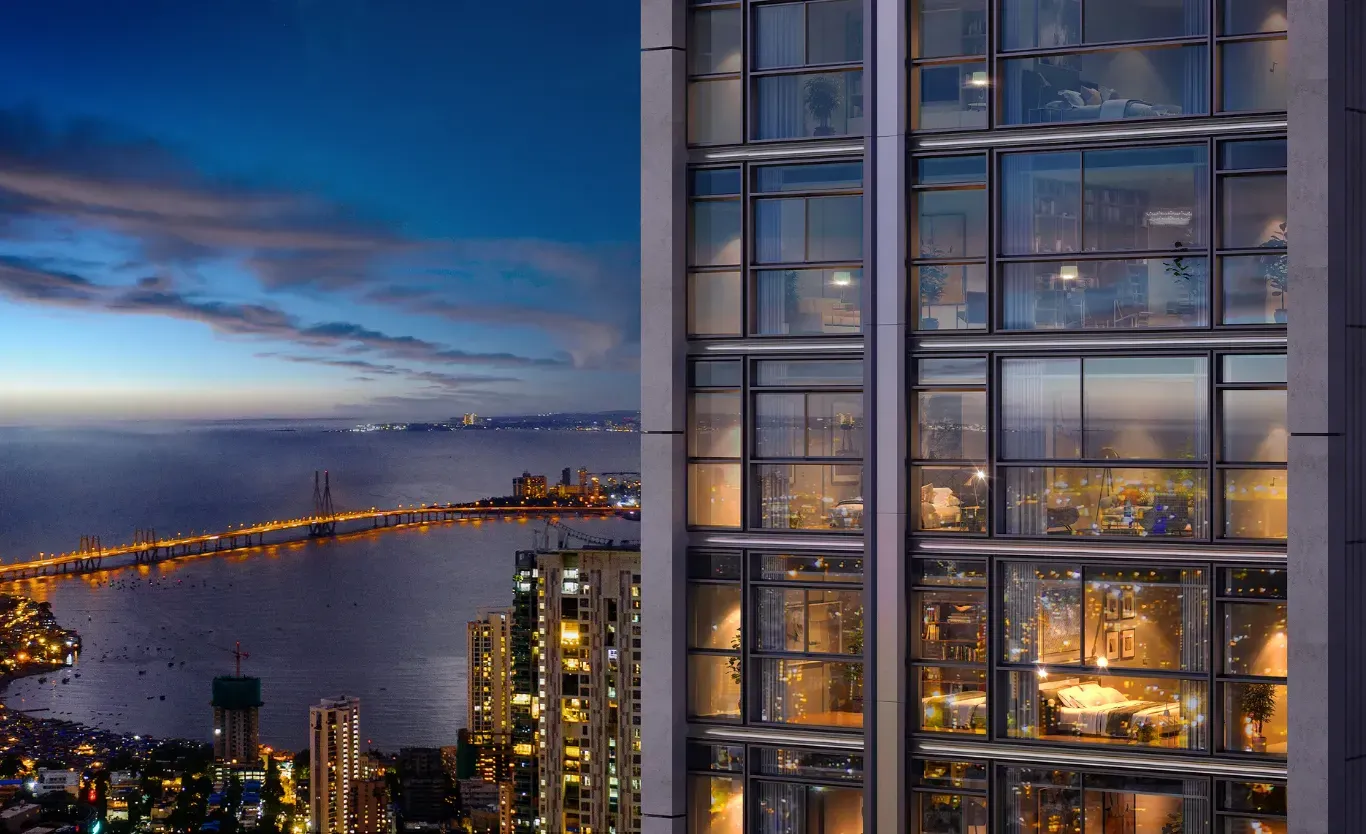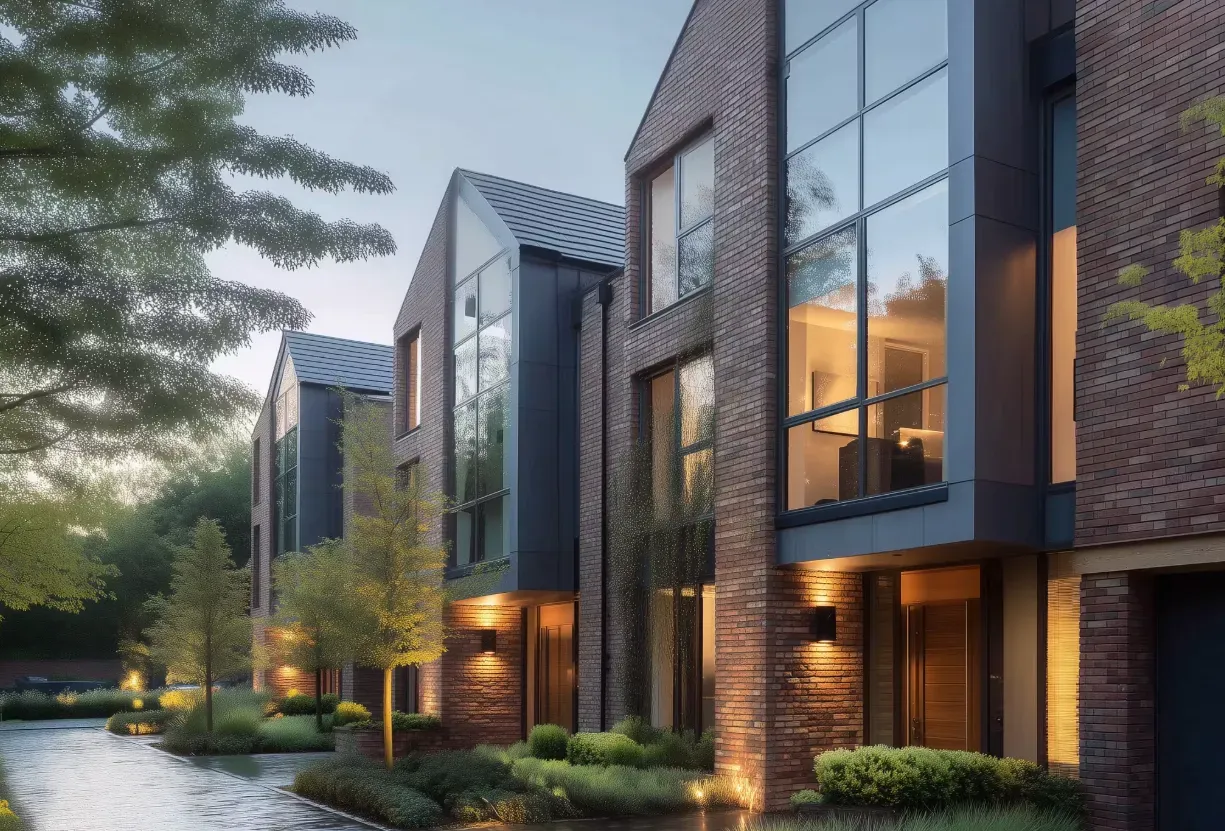The Rise of Experience-Driven Housing in India 2025

By
Shrusti Naik
Posted on September 27, 2025. 10 mins

Introduction

The concept of “experience-driven” housing is rapidly gaining traction in India’s real estate landscape. It transcends the traditional model of houses merely as physical assets or shelters. Instead, these homes emphasize lifestyle, community, wellness, personalization, and immersive features. In 2025, we are witnessing a shift: homebuyers, especially millennials and Gen Z, increasingly prioritize how living spaces feel over just square footage or location alone.
This article explores what experience-driven housing means in India today, its key components, how developers are adapting, benefits and challenges, and what the future might hold. It is aimed at Indian homebuyers, real estate professionals, and investors who want a forward-looking view.
1. What Exactly Is “Experience-Driven” Housing?
“Experience-driven” housing refers to residential projects designed to deliver emotional, aesthetic, social, and functional experiences, not just physical space. Features may include:
- Smart / automated home systems
- Immersive communal amenities (co-working hubs, wellness pods, social lounges)
- Biophilic & green design integrations
- Curated community events and services
- Flexible / adaptive floor plans
- Sensory enhancements (lighting, acoustics, scent, texture)
Think of it as the difference between staying in a hotel that offers more than a bed (with curated experiences) versus a bare minimum lodging.
Globally, experience-based student housing, co-living, and branded residences are pushing this trend. For instance, a recent article on student housing describes dynamic communities that go beyond dormitories, designing for connections, well-being, and lifestyle amenities.
In India, the shift is nascent but growing: developers are branding “wellness homes,” “smart residences,” and “lifestyle clusters” to cater to experience-hungry buyers.
2. India’s Real Estate Context in 2025
Before diving deeper, it helps to understand how India’s real estate sector is evolving:
- The India Real Estate Report FY 2025-26 highlights that technology, sustainability, and new investment models (e.g. co-living, modular homes) are reshaping residential real estate.
- India residential volumes in H1 2025 fell by ~13% YoY, signaling a cooling phase after post-COVID momentum.
- A Reuters poll forecasts home prices rising ~6.5% in 2025 across major cities.
- Developers are shifting more toward premium / experience / luxury housing, while affordable launches are sluggish.
Thus, the backdrop is one of cautious buyers and competition among developers—making differentiation via “experience” more compelling.
3. Key Pillars of Experience-Driven Housing
Here are the core dimensions that define experience-driven projects:
3.1 Smart & Tech Integration
- Home automation: lighting, climate, security, blinds controlled via apps or voice
- IoT sensors for air quality, energy usage, predictive maintenance
- Integrated home assistants / dashboards
These features don’t just add glamour, they enhance convenience, reduce friction, and elevate day-to-day living.
3.2 Wellness & Biophilia
- Green courtyards, vertical gardens, indoor plants
- Air purification, ventilation design, natural light
- Meditation pods, yoga lawns, walking trails
Wellness becomes central: residents want to feel healed by their homes, not stressed by them.
3.3 Community & Social Spaces
- Communal co-working zones, social lounges, rooftop theatres
- Organized resident events, hobby clubs, shared kitchens
- Pop-up spaces, maker labs, interactive installations
These features encourage social bonding and reduce isolation, particularly for urban residents and nuclear families.
3.4 Flexibility & Adaptability
- Rooms that can morph (bedroom ↔ work room ↔ guest room)
- Sliding partitions, foldable furniture, modular designs
- Multi-purpose spaces
This flexibility allows residents to curate their space as per mood, life stage, or context.
3.5 Sensory Design & Aesthetics
- Thoughtful lighting, acoustic buffering, material textures
- Use of color, art curation, ambient sound or scent features
- Spatial flow, sightlines, and “moments of delight”
Experience is perceptual, so the design must appeal to human senses.
4. What Indian Developers Are Doing: Examples & Trends
Branded & Signature Projects
Some high-end developers in Mumbai, Bengaluru, and NCR are launching branded residences tied to lifestyle brands, designers, wellness brands, or global collaborators. This gives experiential cachet and premium pricing.
Wellness / Smart Homes
Developers now advertise air quality systems, smart home packages, acoustic buffering, and meditation zones. In Mumbai and Pune, wellness homes are part of the premium segment proposition.
Co-living & Experience First Housing
Urban developers are exploring co-living and experience-centric student housing models. The student housing example globally shows how aligning living with community, services, and experience is possible. [16]
Phasing & Storytelling
Projects are marketed by themes or “lifestyle clusters” (e.g. art zone, wellness block, tech block). Delivering spaces with narratives helps buyers connect emotionally.
5. Comparison: Traditional Housing vs Experience-Driven Housing
| Feature | Traditional Housing | Experience-Driven Housing |
|---|---|---|
| Focus | Physical space, location, asset value | Sensory, community, lifestyle, emotional value |
| Amenities | Pool, gym, parking, basic common areas | Co-working lounges, wellness hubs, social labs, modular zones |
| Technology | Basic wiring, provision of power | Full home automation, IoT, smart controls |
| Flexibility | Fixed room layouts | Adaptable rooms, sliding partitions |
| Community | Minimal interaction | Curated events, shared spaces, resident services |
| Premium | Location / finishes | Experience, brand value, emotional resonance |
6. Benefits & Challenges
Benefits
- Differentiation & premium pricing: Experience features allow developers to command higher margins.
- Better resident retention & satisfaction: People identify with and invest emotionally in their spaces.
- Health & well-being advantages: Wellness elements may reduce stress and deliver lifestyle uplift.
- Future-proofing: Homes that evolve with tech and life stages remain relevant.
Challenges
- Cost overruns / maintenance: Smart systems, wellness infrastructures, and green systems need upkeep.
- Delivery risk: Promised experience features may be compromised in execution.
- Accessibility & affordability: Experience housing often skews premium; bridging to middle markets is tough.
- User acceptance & education: Buyers unfamiliar with these features may undervalue them or resist the premium.
- Regulatory / building norms: Local bylaws, height restrictions, setback rules may restrict imaginative design.
7. What the Future of Living Could Look Like (India 2030+)
- Experience neighborhoods: Whole precincts or micro-cities built around themes (art, wellness, co-living).
- Hybrid ownership models: Fractional ownership, membership living, lease + service models.
- Plug & play homes: New apartments ready with full experience stack (automation, appliances, services).
- Community subscriptions: Residents pay for curated services (cultural programming, wellness coaching).
- Participative design: Residents co-design elements over time (modular walls, service modules).
- Circular, sustainable experience housing: Net-zero, energy-positive homes that deliver both experience and environmental stewardship.
Given that India’s real estate sector is projected to reach USD 1 trillion by 2030 and continue shifting toward premium / differentiated offerings, experience housing is likely to be a frontier of innovation.
Key Stats 2025 (India / Real Estate Trends)
• India’s residential property volumes declined ~13% YoY in H1 2025, indicating market cooling. • Home prices in major metros projected to rise ~6.5% in 2025 (Reuters poll) • CREDAI reports new residential launches fell ~5% in H1 CY 2025 vs H1 CY 2024. • Affordable housing market in India estimated to grow at ~25% CAGR (2022–2027). • India’s real estate market size in 2024 ~USD 302.9 billion and forecast to grow ~9% CAGR to USD 603 billion by 2033.
How to Evaluate an Experience-Driven Home (Checklist for Buyers)
When evaluating such homes, check:
- Technology stack: Does automation & IoT function end to end?
- Maintenance & support: Who maintains the wellness / smart systems? At what cost?
- Community & operations: Are there resident events, concierge, community team?
- Adaptability: Are rooms flexible? Can the layout change?
- Quality of experience delivery: Is light, acoustics, materials, finish truly premium?
- Scalability & longevity: Will tech or wellness features get outdated or require replacement?
- Transparency / documentation: What exactly is promised vs what is baseline?
Conclusion

The rise of experience-driven housing is more than a trend, it’s an evolution in how we conceive of living. In India’s rapidly modernizing real estate sector, these homes promise not just shelter, but emotional resonance, community, wellness, and flexibility. While challenges of cost, execution, and buyer maturity remain, the momentum is building.
To succeed, homebuyers and real estate professionals alike must think in immersive terms, not just where people live, but how they live. And for those who invest wisely in experience today, the homes of tomorrow may feel not like assets, but like personal sanctuaries.
If you like, I can prepare a city-wise taxonomy of experience-housing projects in India (Mumbai, Delhi NCR, Bengaluru) or a curated list of existing ones. Would that be useful to you?
Frequently Asked Questions
-
Is experience-driven housing legal under RERA / building norms? Yes, as long as the core project (floor plans, amenities, common areas) is RERA-registered and follows local bylaws, adding experience features is permissible. Maharashtra, for instance, has approved over 50,000 RERA projects to date, which gives regulatory backing to innovation. [News: Maha crosses 50,000 RERA projects]
-
Will experience features drive property value appreciation? They can, especially in premium segments where differentiation matters. Buyers may pay a premium for better living experience, thus commanding higher resale value.
-
Are middle-income buyers interested in such housing? Increasingly yes, if the premium is justified and aligned with lifestyle aspirations. However, the bulk adoption in mid-market may take time as cost sensitivity remains.
-
How is maintenance handled in such homes? Typically via facility management companies or developer teams. Buyers must scrutinize expected maintenance charges for experience features (smart systems, wellness zones).
-
Can existing homes be retrofitted to “experience” standards? To some extent, automation, smart devices, modular partitions, greener interiors, acoustic improvements, can be retrofitted. However, structural changes or community features (shared lounges) may be harder.